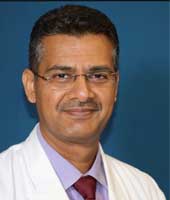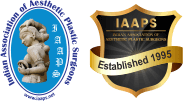



“Cleopatra’s nose, had it been shorter, the whole face of the world would have been changed.”– Blaise Pascal
Imagine the history of the world could be written on the size of a nose!
In today’s world Cleopatra could have chosen the size of her nose with a Rhinoplasty or a nose job.
A nose job is done to improve the shape and /or function of the nose.It can be done to increase or reduce the size of the nose, change the shape of the tip or the bridge of the nose, narrow the span of the nostrils or change the angle between the nose and the lip. It can also be done to correct a birth defect or to help relieve some breathing problems.
The Indian nose is very different and challenging to a surgeon, the skin is thicker, more sebaceous and has more fibro fatty tissue in the tip and supratip areas. Coupled with this is a smaller and less developed osteo-cartilaginous framework leading to a bulbous and ill-defined tip and a broad and low dorsum. Add to this flared nostrils and you can see the challenge I was speaking of.
Most Indian patients looking for a Rhinoplasty want both the nasal tip, and, dorsum addressed. Because of the lack of structural support many of the tips are droopy with no definition to the nasal tip, ala and the dorsum. To achieve a significant improvement in Indian noses both these issues need to be addressed. This is not easy as the changes to the osteo-cartilaginous framework do not show through the thick sebaceous skin. A delicate balance has to be maintained between soft tissue excision and providing enough cartilage support to counter the forces of contraction and subsequent distortion in addition to achieving significant improvement in the nasal profile.
The pre-op consults should focus on the patient’s concerns and expectations from the surgery. Patients who have unrealistic expectations should be carefully counselled.A detailed external and intra-nasal examination should be performed along with detailed pre-op photographs. The photographs should be discussed with the patient and all obvious and minor deformities highlighted. The surgeon should share the preparation for surgery including instructions for smoking, eating and drinking, avoidingcertain vitamins and medications etc. The surgeon should also explain thetechnique, incision, anesthesia, and time needed for recovery.
Computer morphing is the surgeon’s choice which can be helpful in planning the surgery, but must be used very judiciously to showcase results to patients.
Some special experiences to share with my fellow surgeons are around the nasal tip and dorsum
The nasal tip is best addressed with the inverted v trans-columellar open-tip approach. The columellar skin is then raised in a subdermal plane upto the junction of the tip-supratip area. The plane of dissection is eepened to subSMAS plane andfibrofatty tissue is raised as a flap by dissecting close to the alar cartilage. The tip is then fashioned with the use of inter and intra-domal sutures and the use of turn-down alar cartilage flap. Cartilage grafts (sourced from septum, conchal or costal cartilage) are used to stabilize the alar-tip complex and provide shield graft to tip along with columellar strut. In rare cases or if the situation demands, allografts (silicon, PTFE or medpore) can be used for nasal augmentation.
The nasal dorsum,more often than not, needs to be augmented and we almost always use spreader graft or flap to create dorsal aesthetic lines as well as improve the airway. Diced cartilage graft,delivered with insulin syringe,can be used to augment and correct minor depressions at final inspection. Alar rim grafts provide stability and shape to the alar margin.
Rhinoplasty today, lays emphasis on preserving and enhancing architectural integrity of the nose. The final result should produce a nose which does not look operated upon (natural looking) and is harmonious in relation to the rest of the face.Ancillary procedures such as changes to the peri-alar, chin and sub mental areas, malar and cheek areas can be done simultaneously to enhance further the harmonious outcome of the Rhinoplasty.
 Dr Aditya Aggarwal
Dr Aditya Aggarwal
Director, Department of Plastic
Aesthetic and Reconstructive surgery
Medanta the Medicity, Gurgaon, Haryana India

